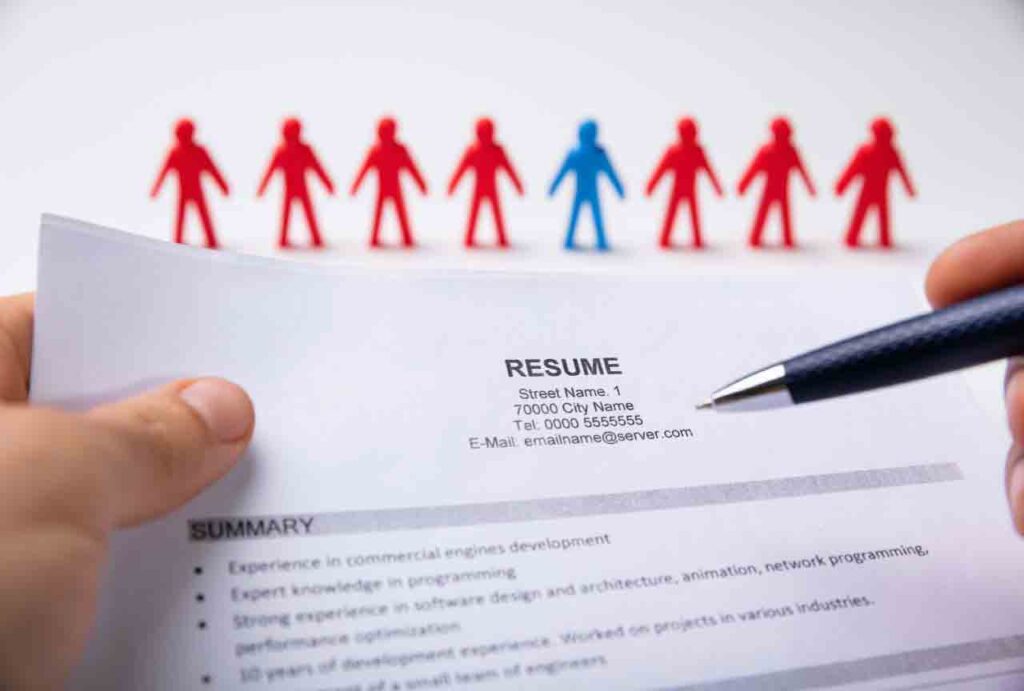Finding a job today has become a significant challenge for many, leaving countless feeling frustrated and uncertain about their future. Despite having the necessary qualifications and even years of experience, job seekers often face long periods of unemployment. The question many are asking is: why is it so hard to find a job?
The current job market is marked by fierce competition, rapidly changing skill demands, technology advancements, and new hiring practices that make traditional job-seeking methods less effective. Graduates, career changers, and experienced professionals alike struggle to meet employer expectations, often feeling left behind by industries that seem to prioritize niche expertise over potential.
I. The Current State of the Job Market
The job market today is vastly different from what it was even a few years ago, presenting challenges that make it increasingly difficult for job seekers to secure stable employment. Understanding these dynamics is crucial to setting realistic expectations and preparing for the hurdles that exist.
1. Over-Saturated Market
One of the primary reasons why it is so hard to find a job is the sheer number of candidates competing for limited opportunities. Many industries face an influx of applications, with each job posting attracting hundreds, if not thousands, of qualified candidates. This saturation means even highly skilled individuals may find themselves overlooked due to the volume of applications employers must process.
2. Economic Instability
Global events, shifting economic priorities, and financial uncertainties have directly impacted job availability. Some companies are cutting back on hiring due to rising costs or reduced consumer demand, while others are investing in automation or outsourcing to save resources. This has resulted in fewer positions for human workers in certain sectors.
3. The Impact of Automation
The rise of automation and artificial intelligence has fundamentally changed the job market. Tasks that were once handled by people are now being completed faster and more efficiently by machines. While this shift creates opportunities in tech-related fields, it reduces the demand for workers in roles that can be automated, making job searches more competitive in those areas.
4. Changing Employer Expectations
Employers today often prioritize candidates with specific, niche skills over those with broad, general qualifications. As industries evolve, many roles require knowledge of emerging technologies, specialized certifications, or hands-on experience with tools that were not widely used in the past. This shift creates a gap between what employers seek and the skills job seekers currently possess.
5. Reduced Entry-Level Opportunities
Finding an entry-level job has also become harder. Many positions labeled as “entry-level” now require significant prior experience or expertise, making it challenging for recent graduates or individuals looking to switch careers to get their foot in the door.
II. The Influence of Networking and Biases
Networking and unconscious biases play a significant role in why it is so hard to find a job today. While skills and qualifications are essential, factors outside of a candidate’s control often influence hiring decisions.
1. The Hidden Role of Nepotism
Nepotism, or preferential treatment for friends or family, can be another obstacle for job seekers. In some cases, jobs are offered to less qualified candidates simply because of their connections, leaving others overlooked despite being better suited for the role.
2. The Power of Networking
Networking has become one of the most effective ways to secure job opportunities. Many positions are never publicly advertised and are filled through personal connections or referrals. This creates an unequal playing field, as those without strong professional networks miss out on opportunities. Building relationships within an industry is increasingly essential, but for individuals without access to these networks, the job search becomes more challenging.
3. Unconscious Bias in Hiring
Unconscious biases can also shape hiring decisions in ways that are difficult for candidates to address. Factors such as age, gender, ethnicity, or even the perceived prestige of a candidate’s previous education or experience can influence outcomes. These biases may not always be intentional but still limit the opportunities available to certain groups of job seekers.

Also Read: 10 Secrets HR Reveals About Job Candidates (You Need to Know)
III. The Digital Application Maze
The digital nature of modern hiring has created additional barriers that make it harder for job seekers to succeed. The reliance on technology in the hiring process has streamlined recruitment for employers but introduced new challenges for candidates.
1. The Volume Challenge
The ease of online applications has led to a flood of submissions for every job posting. For employers, sorting through hundreds of applications is time-consuming, and many qualified candidates get lost in the volume. This environment makes standing out from other applicants even more critical.
2. The Role of Applicant Tracking Systems (ATS)
Many companies use Applicant Tracking Systems (ATS) to filter applications before they are ever seen by a human recruiter. These systems rely on algorithms to match resumes with job descriptions, often rejecting applications that do not include specific keywords. As a result, qualified candidates may never make it past this initial stage if their resumes are not tailored to ATS requirements.
3. The Overuse of Generic Applications
Submitting generic resumes and cover letters is another common reason why job applications fail. Employers are looking for candidates who demonstrate a clear understanding of the role and company. Without customization, applications appear less compelling, further reducing a candidate’s chances.
4. The Rise of Social Media Screening
Employers increasingly use social media and online profiles to assess candidates. An inconsistent or unprofessional online presence can negatively impact a job seeker’s chances, even if their qualifications are strong. Managing digital footprints is now a necessary part of the application process.
IV. How to Stay Resilient During a Prolonged Job Search
A prolonged job search can be mentally and emotionally draining, leading to feelings of frustration and self-doubt. Maintaining resilience is key to navigating this challenging period effectively. Below are strategies to help you stay motivated, focused, and productive throughout the process.
1. Adopt a Growth Mindset
Recognize that setbacks are not failures but opportunities to learn and improve. Each rejection provides valuable insight into what employers may be looking for and how you can better present yourself. Treat the job search as a journey of skill enhancement and personal development, pay attention to the skills that are being looked for in each job description and what the employers are specifically looking for and improve yourself in these skills and areas.
2. Develop a Structured Routine
Establishing a daily routine can provide stability and reduce the feeling of aimlessness. Allocate specific time blocks for activities such as:
- Searching for job openings.
- Tailoring your resume and cover letter.
- Preparing for interviews.
- Networking or attending professional events.
Including breaks and non-job-related activities ensures balance and prevents burnout.
3. Set Measurable and Achievable Goals
Break the job search into smaller, actionable steps with clear milestones. Examples include:
- Submitting a certain number of quality applications per week.
- Attending a specific number of networking events each month.
- Completing an online course or earning a certification within a set timeframe.
Tracking progress against these goals can provide a sense of accomplishment and keep you motivated.
4. Practice Self-Reflection
Periodically evaluate your approach to identify areas for improvement. Ask yourself:
- Are you targeting the right roles and industries?
- Is your resume and cover letter tailored to each application?
- Have you received feedback from interviews, and how can you address it?
Being honest with yourself and adapting your strategy can help improve outcomes.
5. Leverage a Support System
A prolonged job search can feel isolating, but you don’t have to go through it alone. Engage with:
- Friends and Family: Share your experiences and seek encouragement.
- Professional Contacts: Reach out to mentors, former colleagues, or industry professionals for advice or potential opportunities.
- Support Groups: Join job-seeking or career development groups online or in-person to connect with others facing similar challenges.
6. Enhance Your Skillset
Use the time to invest in yourself. Consider:
- Learning new tools or technologies relevant to your field.
- Improving soft skills, such as communication or leadership.
- Taking courses on platforms like Coursera, LinkedIn Learning, or Udemy.
These actions not only increase your marketability but also give you a sense of progress during the search.
8. Diversify Your Job Search Approach
If your current strategy isn’t yielding results, try new methods:
- Attend job fairs or industry conferences.
- Reach out directly to companies, even if they don’t have active openings.
- Participate in informational interviews to build connections and gain insights.
Exploring less conventional avenues can sometimes lead to unexpected opportunities.
9. Take Care of Your Well-Being
Maintaining physical and mental health is essential for resilience.
- Exercise Regularly: Physical activity can reduce stress and boost energy levels.
- Prioritize Sleep: Restful sleep enhances focus and decision-making.
- Eat Balanced Meals: Proper nutrition supports overall well-being.
- Practice Mindfulness: Techniques like meditation or journaling can help manage stress.
The challenges of finding a job today are undeniable, but they are not insurmountable. Understanding the realities of the job market, addressing personal and systemic obstacles, and taking strategic, thoughtful actions can significantly improve your chances. Stay focused, adapt as needed, and remain committed to your goals. Every step you take is progress, and the effort you invest now can lead to meaningful opportunities ahead.



